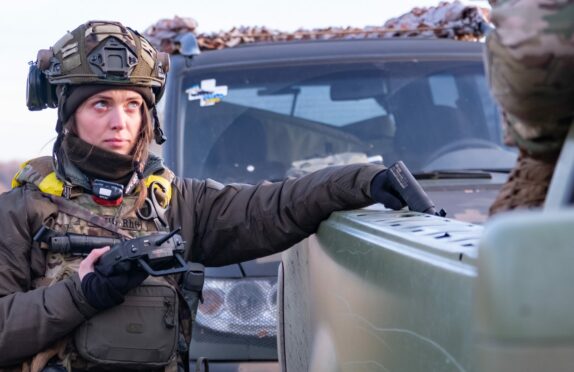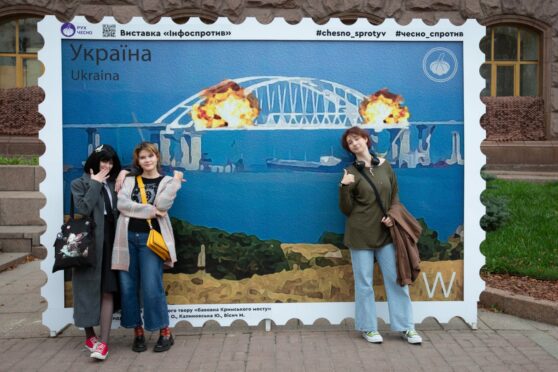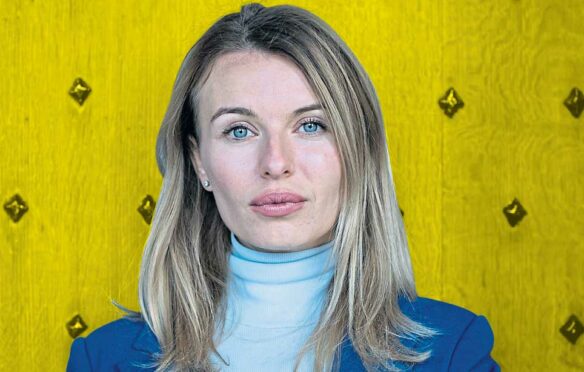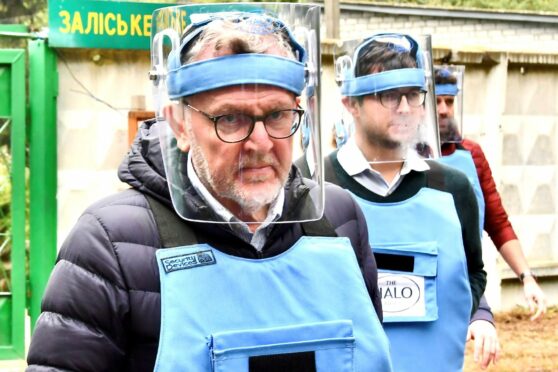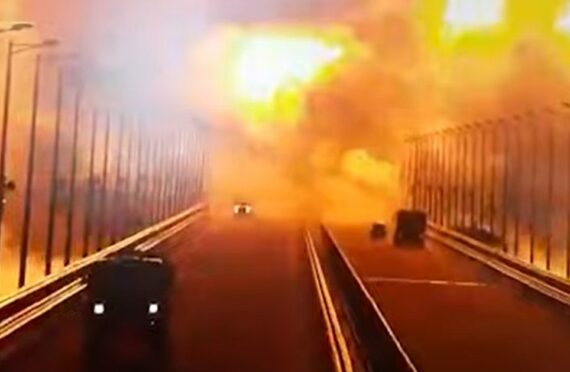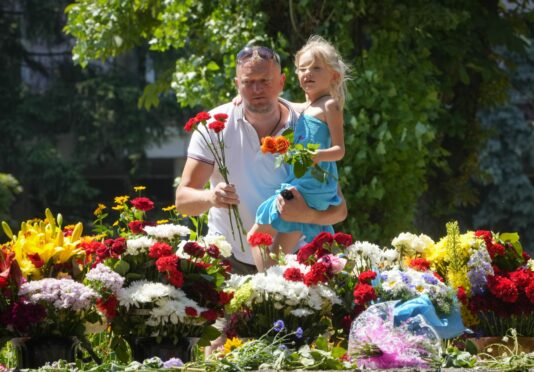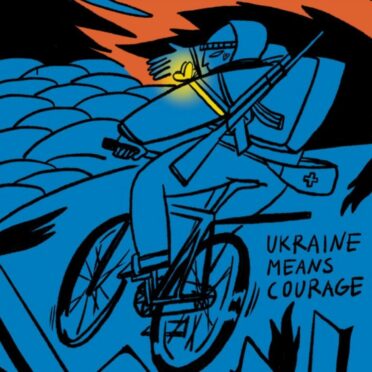
An IT worker employed by a California start-up and her children, killed by Russian mortar fire as they tried to run away from their home. Three dead, including a child, in a Russian airstrike on a maternity hospital.
Thirteen civilians killed in another airstrike on a bread factory. Seventy children killed in two weeks. Apartment blocks destroyed by Russian rockets, shopping malls on fire.
Terrified, badly-led Russian soldiers in their country’s fourth-best tanks slaughtered by outnumbered Ukrainians.
Elderly pensioners taking up automatic weapons to defend their towns. The black smoke of battle rising over highways and country lanes south, north and east of a vast European land.
This is Ukraine today. Until 23 days ago, outside two relatively small areas of the country that have been under Russian control for eight years, it was at peace. People were dropping their kids off at school, walking the dog, worrying about relationships and bills and mortgages, watching the football, moaning about politicians, going to the pub, studying, longing for spring.
Then the Russian military attacked, with tanks, shells, rockets, missiles and planes, killing and destroying. There is no end in sight. How could this have happened?
I was in Kyiv the week before the invasion. I took the warnings of American and British intelligence, and the satellite pictures showing a massive build-up of Russian troops on the border, seriously. I thought an attack might come at any moment. Ukrainians were more sceptical. They didn’t think the Russians would dare. No one was fleeing, no one was panic-buying. I saw no armed soldiers, no sandbags, only rush-hour traffic jams and flashy ads for fashion brands.
On a trip up towards the Belarussian border, not only were the Ukrainians not blowing up or fortifying bridges, they were still renovating them. Although I felt guilty about leaving, the day of my departure was ordinary, normal, even boring. An Uber to the airport, security, passport control, an overpriced coffee, and on to the Ryanair flight to Stansted. As it turned out, it would be the last Ryanair flight from Ukraine for a very long time.
I first visited Ukraine in 1990, on a short trip, when it was still part of that long-vanished communist superpower, the Soviet Union. The following year, I handed in my notice to my employers in Edinburgh, packed up my possessions in an old Volkswagen Polo and drove to Kyiv, via England, Belgium, Germany and Poland.
When I crossed the border into Ukraine, in November 1991, it was still part of the Soviet Union but it was obvious it was about to become an independent state. A few days after I arrived, a referendum approved independence by a gigantic margin – 92% “yes” against 8% “no”. Even the most sceptical area, Crimea, voted “yes”.
At the time, having grown up in Scotland, I leaned quite heavily towards Scottish independence, and the similarity between the two countries’ situation seemed obvious, and not just because Edinburgh and Kyiv were twin cities.
Russia, the biggest part of the Soviet Union, was historically, culturally and geographically close to Ukraine, like England to Scotland. But the histories and cultures of Russia and Ukraine, like England and Scotland, were distinct.
The Soviet Union was the successor to the Russian Empire. Ukraine and Russia were both part of that empire during its biggest expansion in the 19th Century. And yet, like Scotland in relation to England within the British Empire, there were always two ways of looking at it: was the smaller country an imperial partner, or a kind of colony? Or both?
In Soviet and imperial times, Russia permitted Ukraine its language and its culture but it was always tightly restricted from Moscow or the imperial capital, St Petersburg. Whatever power there was – economic, financial, political, military, cultural – was rigidly controlled by St Petersburg or Moscow.
It wasn’t simply about leaders, either. Certain lingering prejudices from the Russian side rankled with Ukraine: that Ukrainians were narrow-minded countryfolk, ignorant and sly, slovenly and greedy.
Ukrainians voted for independence with a glad heart, sure that their country was rich in resources. They thought that, within the Soviet economic system, Russia had been robbing them for years. The decade that followed was a bitter lesson for both countries.
Used to the limits and certainties of the old Soviet communist economy, Ukrainians and Russians alike were unprepared for the shock of the overnight introduction of consumer capitalism. Prices rocketed. When the Ukrainians introduced their first currency to replace the Soviet rouble, the highest-value banknote was 100. A few months later, it was a million. Savings were wiped out, first by hyperinflation, then by a series of investment scams. Pensioners suffered the most.
One of the few products that became easier to get and relatively cheaper was alcohol. Many simply drank themselves to death: one estimate suggests as many as seven million people in the former Soviet Union died as a result of alcohol abuse in the decade after the coming of the free market.
Those best placed to take advantage of the collapse of the old way of doing things were the racketeers and gangsters who had existed in the old Soviet black market, and the group of clever, ruthless opportunists who first taught themselves the ways of capitalism. Playing on all the weaknesses of the post-Soviet system and the openness of Western economies, they rapidly amassed vast fortunes as they gained control of big enterprises and set up commercial banks. Many rivals were murdered in the process, and deep inequalities established that still exist.
By the turn of the millennium, Ukraine and Russia had managed to stabilise their economies. At that point, there didn’t seem much to choose between their situations: each seemed poor, chaotic, corrupt, struggling. Russia, under its new leader Vladimir Putin, was in a state of civil war, with Putin launching yet another attempt to use military force to subdue the country’s rebellious province of Chechnya.
As the 21st Century wore on, however, it became clear that Ukraine faced deep disadvantages compared to Russia. First, Russia’s ability to mine and export its vast reserves of raw materials – metals, coal and diamonds, but particularly oil and gas – made it the richer country.
The end of the 1990s saw a massive increase in the price of oil. Much of this income was stolen by Putin and his cronies, but there was still plenty left over to start rebuilding broken Soviet infrastructure, modernise the Russian military and pay higher pensions to ordinary people.
A second problem for Ukraine was that, because of the top-heavy way the old Soviet system worked, the government the newly independent country inherited – its civil service, the group supposed to actually run things – was not only corrupt but under-staffed, under-educated, ill-experienced and lacking in confidence. For generations, the best and brightest Ukrainians had moved to Moscow and St Petersburg. After independence, the brain drain went on, but now to the US, Europe and Israel.
Ukraine struggled with something else, too: a national idea that would unite the country. From the beginning of the independent republic there was a tension between the far west of the country, where Ukrainian was spoken at home, people worshipped according to the Greek Catholic rite and Stalin was the greatest historical villain, and the far east, the Donbas, where Russian was spoken at home, people worshipped according to the Russian Orthodox rite, and Hitler was the greatest historical villain.
In fact, it wasn’t that simple. Ever since Ukraine became independent, outside observers, including Putin himself, have seen Ukraine through the framework of that cliché – “right-wing west Ukrainian nationalists” versus “pro-Russians”.
But there’s a third direction in Ukraine – a mood, a movement, a tendency – that has only grown with the years. It brings together students, intellectuals, liberals, entrepreneurs and the middle class. You could call it “pro-European” but you would also have to call it “patriotic”. You could equally call it a movement for fairness and justice.
In a word, Ukrainians have travelled. They’ve seen the EU, and they’ve seen Russia, and they know which they prefer. For all their shortcomings, most EU countries have found a way for individuals to prosper and do their own thing, for the wealthy and powerful to have checks on their corrupt behaviour, for the minimal welfare of all to be protected, and for democracy and the rule of law to be preserved. Russia has moved away from these values. For a long time, Ukraine stood at the crossroads.
Putin’s view of the past 20 years in Ukraine is of a politically passive Ukrainian-Russian majority, holding in their hearts an essential loyalty to Russia, being held hostage by a small group of extreme nationalists, backed by Western money. It’s a crooked mirror image of what he has done to his own country. The extreme nationalist is Putin.
He showed just how extreme a nationalist he was in Chechnya, where, in the name of Russian unity, he destroyed, with bombs and shellfire, an entire city, Grozny. He used his petroroubles to rebuild the city, but he couldn’t remake the tens of thousands of people he killed during its demolition. Now he is doing to Ukraine, in the name of his own ultra-nationalistic theory of “Russian-Ukrainian unity”, what he did to Chechnya. The Ukrainian cities that have suffered most so far from Russian rockets, shells and bombs are the cities where most ethnic Russians live, Kharkiv and Mariupol.
Putin’s feelings about Ukraine, which he has spelled out a number of times, are a mixture of fear and desire.
Despite Russia’s huge nuclear arsenal, he fears Ukraine becoming a bridgehead for liberal, social democratic values, and for Western militaries; he fears sharing the fate of Saddam Hussein, Muammar Gaddafi and Slobodan Milosevic. He desires Ukraine’s grain fields, its factories, its ports and its people; he believes, like some medieval monarch or 19th Century imperialist, that they belong to him, or to a greater Russia. It is not clear he perceives any distinction any more between Russia’s interests and his own.
Neither fear nor desire for Ukraine would have been enough, by themselves, to have triggered Putin’s reckless gamble. Together, they proved irresistible.
Putin has been trying to bring Ukraine back into Russia’s orbit for most of this century. First, there was Putin’s backing for the rigged election of a pro-Russia candidate in 2004, which triggered Ukraine’s Orange Revolution.
Nine years later Putin conspired with that same candidate – who had by then won an election fairly – to block Ukraine’s attempt to sign a trade deal with the EU in favour of closer ties with Russia. That triggered another, more violent uprising, the Revolution of Dignity, also known as Maidan. When the president fled and the rebels won, Putin seized Crimea and sponsored a rebellion in Donbass.
Each of these chapters had the opposite effect to what Putin intended. Far from driving a wedge between the Russian leader’s mythical “radical nationalist minority” and “ordinary Russia-loyal Ukrainians”, it brought Ukrainian liberals and nationalists together, and shrank to an ever-smaller minority the number of Ukrainians prepared to defend Putin’s behaviour.
It could have been so different. It could have been the other, better Russia, now repressed and in hiding, that came out and shone in the 21st Century: the Russia of poets, artists, scientists, engineers and great idealists, the Russia of Tolstoy and Akhmatova, of Mendeleev and Gagarin, that set an example. Instead, Ukraine is offered the Russia of pogroms, the Gulag and the secret police.
Already, in the one large Ukrainian city the Russians have managed to capture, they are arresting people. Ukraine is still in the fight and, with continued supplies of weapons from the West and unwavering support for the strictest sanctions against Moscow, its courageous people may prevail. Its fight is not only for its own survival, but for the idea that, in an increasingly autocratic, oligarchic world of dictators and billionaires, liberals and patriots can make common cause against cruel bullies. They also fight for us.

Enjoy the convenience of having The Sunday Post delivered as a digital ePaper straight to your smartphone, tablet or computer.
Subscribe for only £5.49 a month and enjoy all the benefits of the printed paper as a digital replica.
Subscribe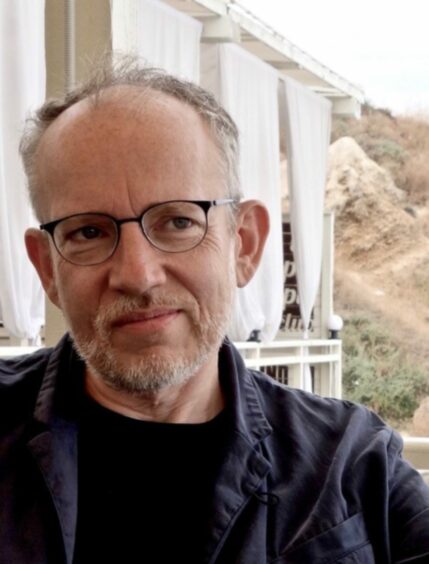 © SYSTEM
© SYSTEM